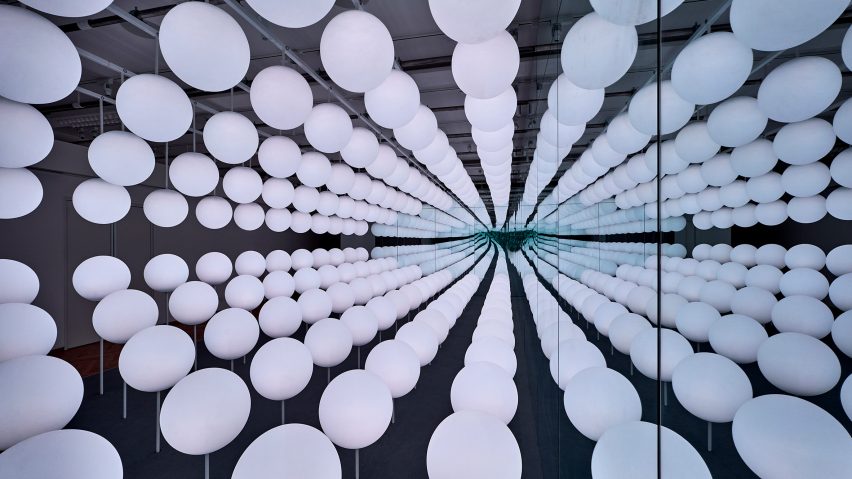
Snarkitecture fills New York gallery with lights that resemble "large lollipops"
New York studio Snarkitecture has filled a Manhattan gallery with 168 white spherical orbs that light up in a blue hue when touched.
Snarkitecture designed the immersive Sway installation for a gallery at Intersect – a cultural hub in the Meatpacking District of Manhattan, run by car manufacturer Lexus.
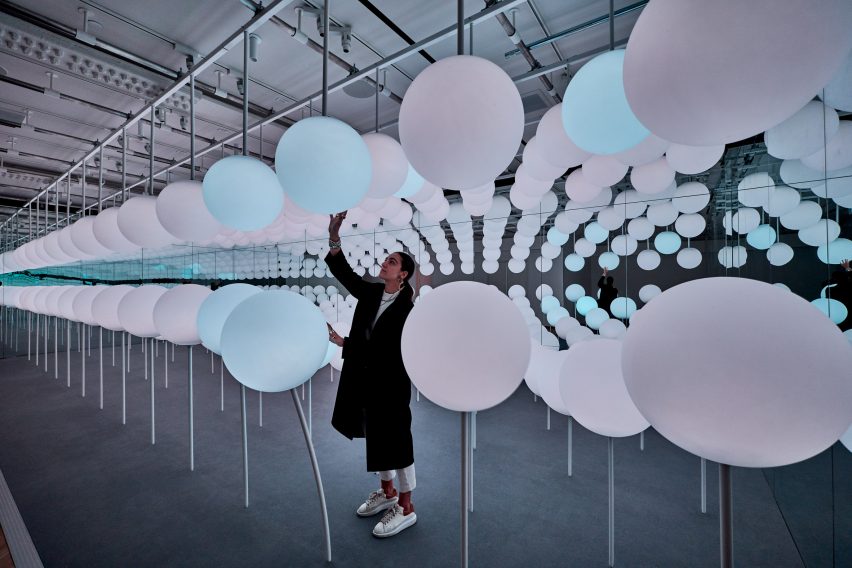
It comprises multiple rows of white plastic spheres hanging from the ceiling and sprouting from the floor. The arrangement of the orbs reflect each other from above and below. The rows repeat, gradually shortening in height from the ceiling and ground, effectively opening up the space.
They are supported by flexible, swaying poles. Snarkitecture co-founder Alex Mustonen likens their shape to ''large lollipops''.
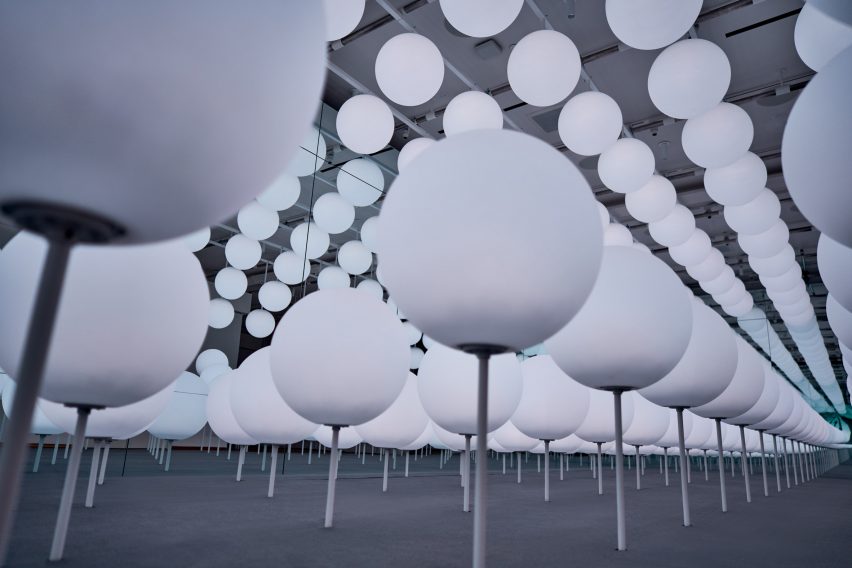
Inside each sphere are LED lights that change colour as the visitor moves through the exhibit. The activation of the light sensor uses the same technology that triggers the shifting orientation of a smartphone screen when the phone is rotated.
The lights are connected to electronic motherboards on the ceiling and floor that "speak to each other" to simultaneously light up upon interaction. ''As you move through, it is a field of spheres that respond to your touch points and movement,'' Mustonen told Dezeen.
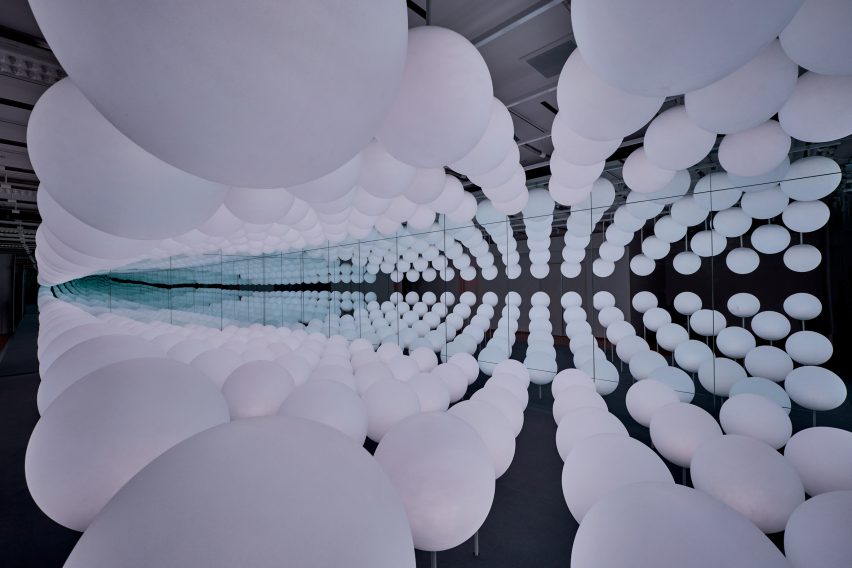
''They're illuminating or changing colour based on speed, motion and direction,'' he continued. ''The idea is essentially to create this immersive feel, in a relatively small space."
Unlike most of the studio's large-scale projects in public spaces, Snarkitecture was challenged to create an exhibit in a space measuring 140 square metres.
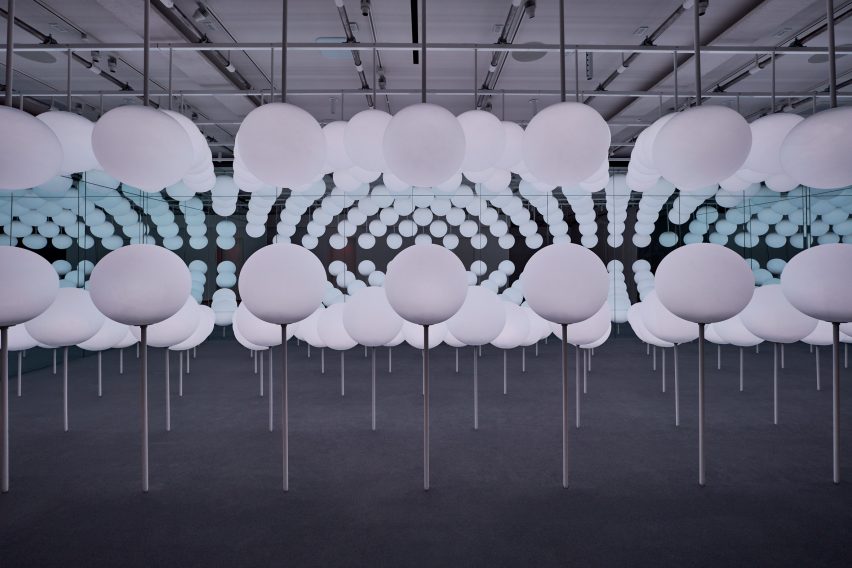
In addition to the physical reflection of the spheres, the walls surrounding the space are also covered in mirrors. This creates an infinity effect to open up the area.
''In order to enhance it, there's a literal mirroring but then we’re playing with reflection with actual physical objects as well,'' said Mustonen. ''There's a sort of a parabolic sweep and then that's reflected above, and so it's sort of being enveloped in this shape; it feels very surrounding.''
Speaking to Dezeen at an event held at Intersect on 13 May, Snarkitecture partner Ben Porto told Dezeen the team chose the ball shape to ''remind you of play". The balls are formed of HDPE (high-density polyethylene) plastic, which is poured into a mould and rotated to create a smooth surface.
''Obviously, there's a lot of constraints to work with, and time constraint but ultimately we arrived at this product which is an HDPE plastic sphere," Sway project manager Breanna Urquhart of Snarkitecture, told Dezeen.
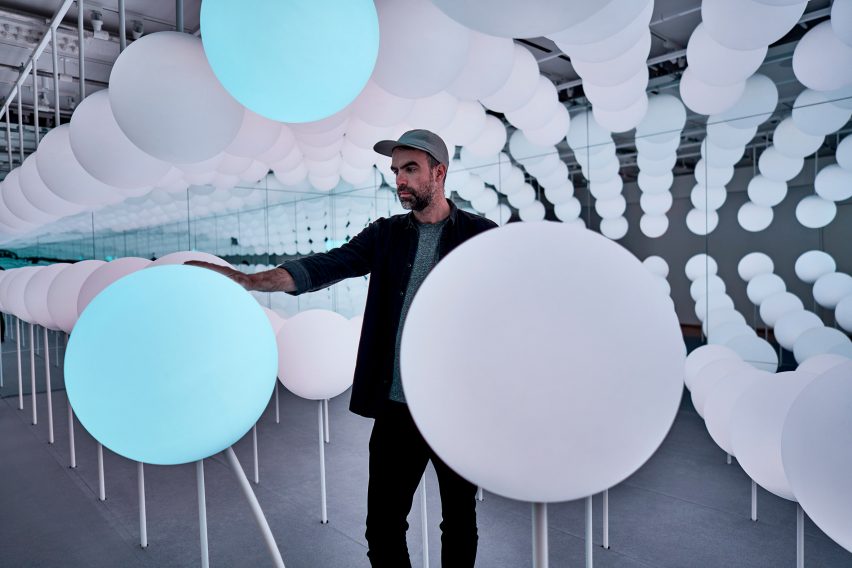
"One version we looked at was an inflatable skin versus a hard surface," Urquhart continued. "What is that tactile experience, and how does it relate to the responsive technology that's within it?".
Sway is the Snarkitecture's latest project after the opening of Snark Park, a permanent exhibit at New York's Hudson Yards.
''Like Snark Park, Sway is creating a simple understandable landscape where you kind of get lost in an enchanted forest," Porto said.
The studio is based in Long Island City and its works play on the intersection between art and architecture. The light installation follows a number of other playful projects by the firm, including a giant bouncy ball playground in Hong Kong and a fun house in Washington DC.
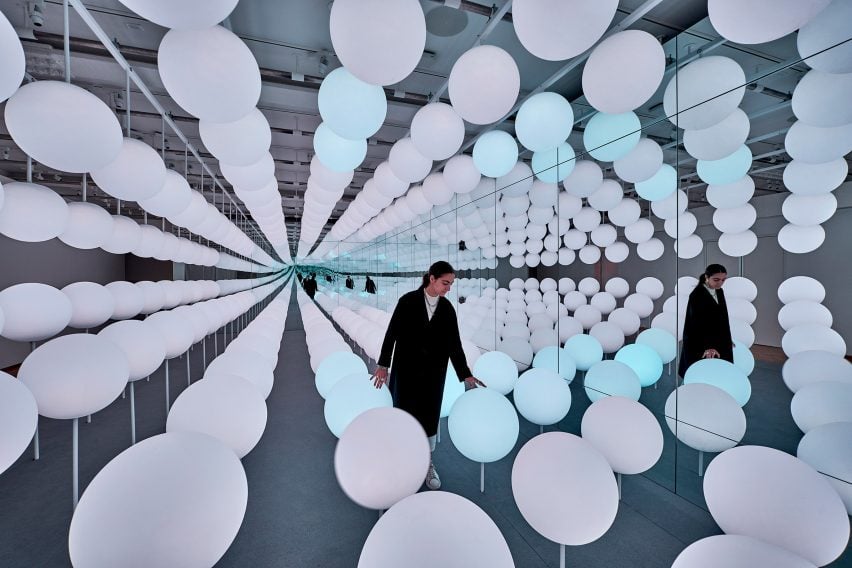
Sway is is the result of a collaboration between Lexus and Snarkitecture that started with a partnership with the Lexus Design Awards. The installation is open to the public from 3 May until 2 June at Intersect at 412 West 14th Street in Manhattan.
The exhibition coincides with the city's New York Design festival. NYCxDesign highlights include 10 shows not to be missed as well as an all-female exhibit.
Photography by Noah Kalina.